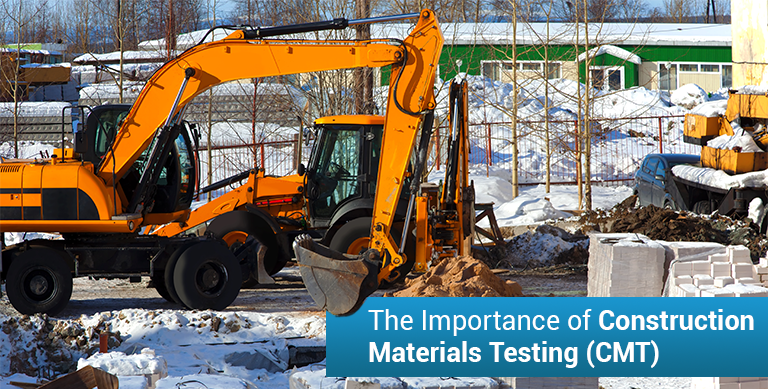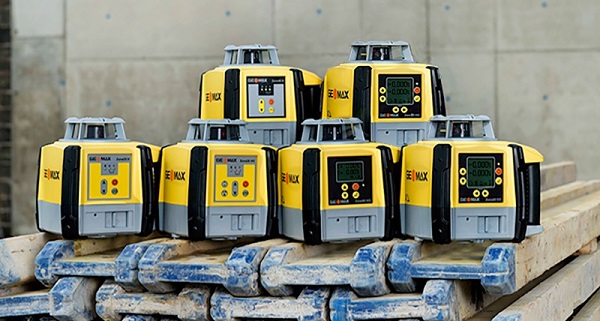There is a lot more that goes into constructing a residential or commercial structure than what meets the eye. Besides concrete walls and finished floorings, several hours of labour, safety precautions, and the quality of the materials need to be considered. These are some of the most important factors that’ll ensure a structure stands the test of time. Thus, below let’s check out the importance of Construction Materials Testing (CMT) and how we can help.
A. What is Construction Material Testing (CMT)?
The materials used in building any structure, such as roads, bridges or buildings, play a vital role in every project. Just like you can’t bake a cake without all the required ingredients. Similarly, you cannot build a robust structure without high-quality materials.
To further simplify it, if the material used to build a structure is poor, the structure won’t last for long. Meaning, the final product – be it a road, a bridge or a building – will only be as good as the quality of the materials used to make it.
Construction Materials Testing is essential when you undertake a project for building a new structure or amending & improvising an existing structure. This type of testing service helps you determine the quality, safety, efficacy, and endurance of the materials used for the project.
B. Why Construction Materials Should Be Tested?
Materials testing engineering services help you analyze each material component and offer quality assurance. CMT is considered a regulatory requirement for almost all projects – small as well as large-scale – where large quantities of materials are to be used, as the risk factor is high.
Engineers and builders may not know if the material quality meets the actual requirements without CMT. Therefore, a professional construction material testing lab can provide the assurance they need along with an estimation of the project’s longevity and life expectancy based on the results obtained.
- CMT is done at the beginning of a project. Or in some cases, before, to establish a successful foundation.
- Material testing and inspection are required for both vertical and horizontal construction. In both types of development, if the materials align with the original design, it can prevent potential legal claims and ensure high safety.
- CMT can identify issues related to the quality of the construction material, highlight future risks, help classify a building site, and assist with engineering decisions.
- To ensure the safety & viability of the construction materials, both field & laboratory testing are vital. Here, a well-known construction materials laboratory such as GTS can provide all the assistance you need.
- Construction Materials Testing will also ensure that your project is completed on time without expensive delays.
C. On-site (Field) Testing vs Laboratory Testing
- On-site Testing: On-site or field testing takes place on the site. This type of testing includes factors that can be evaluated through visual inspection and/or non-destructive techniques such as air, moisture content, and more. The main examples of construction material evaluated during field or on-site testing are soil foundation, steel structure, and retaining walls.
- Laboratory Testing: In instances where field testing is exploratory or indeterminate, samples of materials are taken and sent to a construction material testing lab for test and review. Also, when the need for further study of materials is indicated in Field Testing, Lab Testing is the next step in the comprehensive CMT regime. PH testing of soils, testing compression rate of any concrete, etc., come under this kind of testing.
D. Different Construction Materials That Need To Be Tested
1. Testing of Rocks: Rocks are the most common materials used in construction. Some foundations are even made with rocks. Thus, the stones used in construction must meet the required quality standards. Igneous, sedimentary and metamorphic are the three types of rocks found. A civil engineer would perform various tests to understand what type a particular rock is, and check its electrical resistivity – a crucial factor in countering electric shocks. Testing of rocks also includes durability and slaking tests to ensure the rocks won’t disintegrate when exposed to moisture.
2. Testing of Bricks: Bricks are known as load-bearing materials that support your construction. The bricks utilized in construction need to be hard and durable because poor quality bricks will disintegrate a structure within a couple of years or even months. To ensure low-quality bricks aren’t used in construction, a civil engineer needs to send the sample to a construction materials laboratory. This will help determine whether or not the bricks are durable enough to withstand natural calamities.
3. Testing of Soil: Soil testing in civil engineering revolves around the in-depth analysis of the soil to check if it has a dry or moist base. Depending on the result, the engineer can decide whether to continue or stop the construction. Without soil testing, the foundation can sink or entirely deteriorate, leading to the collapse of the entire structure. Thus, the initial soil investigation reports must meet the subsurface soil examination done in the laboratory.
4. Testing of Cement: Cement plays a significant role in construction, as it is one of the many materials used in large quantities. A couple of tests are carried out in a laboratory to ensure that the cement is good enough to support the constructed structure. The grain size of the cement is evaluated individually through a fineness test, post which other methods are used to ensure the cement is high-quality. Once the cement is marked durable, a consistency test is performed to check how much water is required to make it into a paste. These tests save your time, money, and effort.
5. Testing of Concrete: Modern structures cannot be constructed without the use of concrete. There are multiple concrete tests that a civil engineer would perform to ascertain the quality of the concrete and determine if it is ideal for use. A slump test is carried out to check if the concrete complies with the mix design. Another comprehensive test is done to check the overall strength of the concrete, which gives a clear picture of possible cracks. Later, the durability of the concrete is examined by the water permeability test.
6. Testing of Aggregates: Aggregates are used for pavement construction. The load transfer capability of pavements is influenced by aggregates to an extent, due to which it is essential to test them thoroughly before application. They are tested for strength, toughness, hardness, water absorption, and shape. This can be done through tests such as:
- Abrasion test for hardness
- Impact test to evaluate the resistance to impact
- The soundness test – to study the resistance of aggregates to weathering actions – is done by conducting accelerated weathering test cycles.
Conclusion
Material Testing helps us understand and make a well-informed decision about whether we should use a specific material in the construction or not. Listed above are some of the prime materials that are tested during the construction of a structure. These tests are essential for the longevity and durability of the constructed structure. If you are working on a new construction project or enhancing an existing structure, get in touch with us for comprehensive materials testing.





















